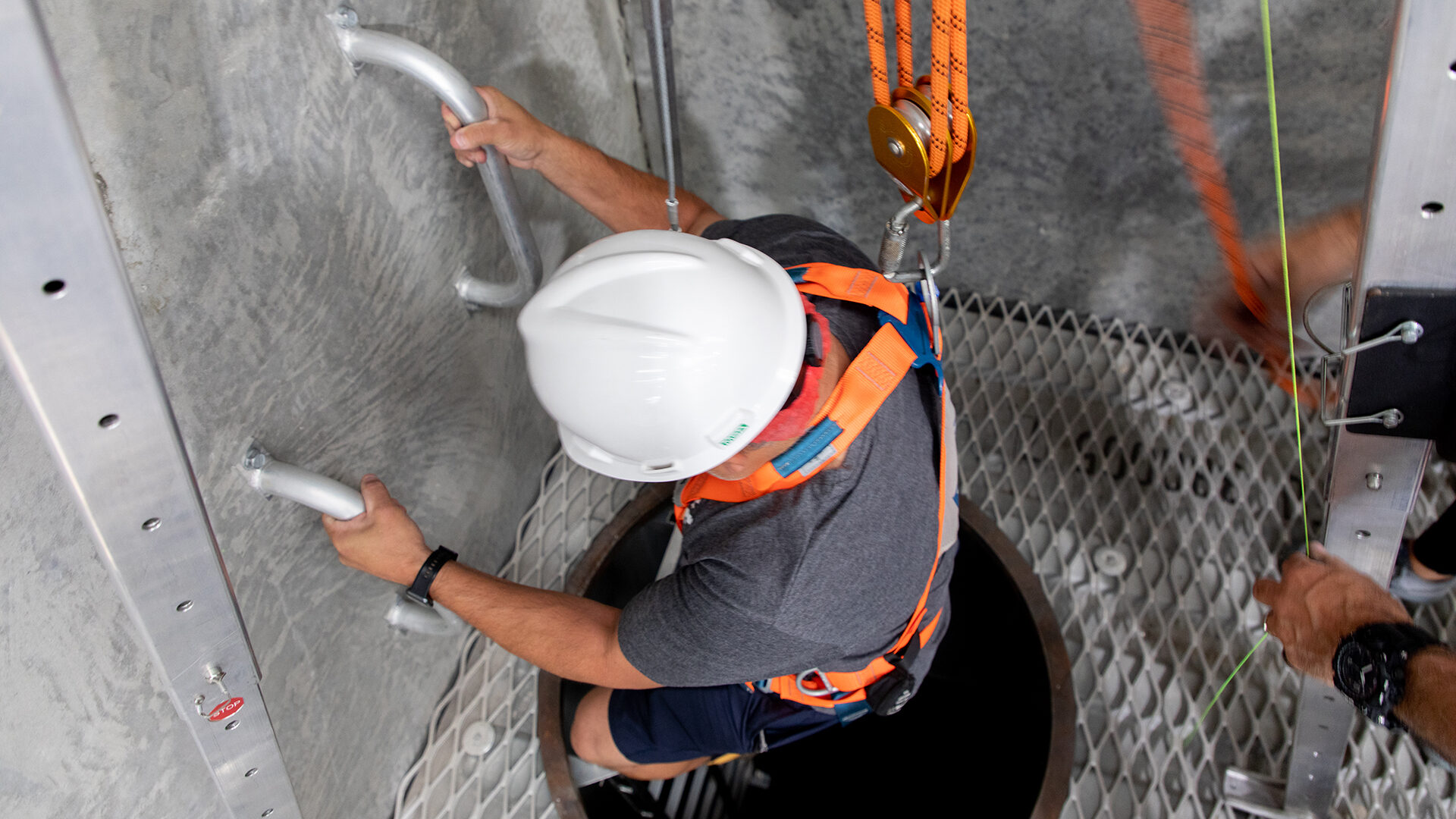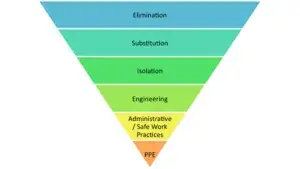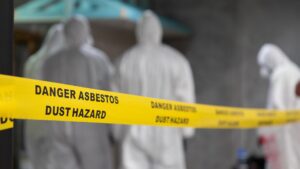Oxygen is one the key components that supports life on Earth. When working in confined spaces, it is important that oxygen levels are not too rich or too deficient. Both can introduce serious hazards for workers.
Oxygen makes up about 20 per cent of the Earth’s atmosphere. It is one of the most important gases for sustaining human life. The cells in our bodies use oxygen to create their own energy and maintain health. Oxygen is converted into carbon dioxide and then expelled.
When it comes to working in confined spaces, it is critical that oxygen levels be kept within a specific tolerance. While some of the issues surrounding a lack of oxygen might seem straight forward, safety hazards are also introduced should oxygen levels become too high.
What is the ideal level of oxygen?
If you were to measure the atmosphere standing outside in the open air, you would find that its composition would be something along the lines of 78 per cent nitrogen, nearly 21 per cent oxygen, 0.04 per cent carbon dioxide and then just under one per cent is a mix of other gases.
When working in confined spaces, AS2865:2009 specifies both the minimum and maximum levels of oxygen in a confined space to provide a safe, respirable atmosphere for workers.
Oxygen concentration in a confined space should not fall below 19.5 per cent and should not exceed 23.5 per cent.
Falling below the minimum level or exceeding the maximum level can create an extremely hazardous environment for workers in that area.
What happens if oxygen levels are too low?
Once oxygen levels fall below a safe level, it immediately begins to affect the human body. One factor that increases the danger is that the human body cannot detect a lack of oxygen. There is no internal “alarm” that goes off in the event not enough oxygen is being taken in.
As oxygen levels drop below 19 per cent, a person’s ability to complete strenuous work decreases. Their coordination can also start to decrease – this can be akin to feeling a little bit clumsy.
Lowering down to 14 per cent introduces increased respiration – the rate of breathing quickens. Judgement begins to become impaired (we make poor decisions) as the brain begins to suffer the effects of oxygen deficiency.
As levels continue to decrease down past 12 per cent, the lips begin to turn blue. The extremities are not receiving enough oxygenated blood from the lungs. Respiration increases again while mental capacity continues to decline.
At 10 per cent, complete mental failure begins. A person can faint and fall unconscious. They can also be overcome by nausea and begin vomiting.
Once oxygen levels drop to 8 per cent, the situation can start to become extremely dire. Being in this atmosphere for just eight minutes can be fatal. Even with just six minutes of exposure, survivability is a coin toss.
When oxygen levels drop below 6 per cent, a person can fall into a coma in 40 seconds. Death follows shortly after.
How can an atmosphere become oxygen deficient?
There are many ways the level of oxygen in a confined space can reduce quickly.
The combustion of flammable materials is one of the main ways oxygen levels can be altered. Tasks like welding or cutting use oxygen when creating flames or sparks.
When working in sewers or other similar waste systems, the bacterial reactions in organic matter can also reduce the amount of available oxygen.
In a sufficiently small confined spaces, with poor ventilation, even the respiration (breathing) of a worker can, over time, reduce the concentration of oxygen available.
What happens if oxygen levels are too high?
Combustion requires three ingredients. The first is fuel, the second is a spark, and the third is oxygen. Without oxygen, the likelihood of combustion occurring, or a fire breaking out, reduces significantly.
As oxygen levels increase, the ability of an atmosphere to support combustion, or a fire, increases. As levels increase beyond what exists in the natural atmosphere, the intensity of any potential fire or combustion event can be increased.
Even a pure oxygen environment can increase the intensity of a combustion event, there is not a saturation point where too much oxygen can stifle a fire.
Monitoring the atmosphere in a confined space
It is vital that the atmosphere of a confined space be tested to make sure it is safe for workers to enter and stay in. There are many hazardous gases that can be present within common confined spaces, not just the dangers of insufficient oxygen levels.
Along with initial atmospheric testing prior to starting work, it may be required that the atmosphere of the confined space be monitored continuously during work. This safety step can assist in providing workers with early notification that the composition of their air is becoming hazardous. Early notification provides the ability for workers to safely evacuate the area before becoming overwhelmed or exposed to harmful toxins.
Holistic approach to confined space safety
Working safely within and near confined spaces is not just a matter of checking the air quality and making sure it is OK. Everyone from the site owner, managers, supervisors, and workers is responsible for making sure that every safety angle is covered.
Taking a holistic approach to safety means having safety systems in place, proper documentation, procedures, rescue plans, training and more. Holistic safety means actively engaging in what work is being done and where to assist in protecting workers from harm.
Discuss your safety with Height Safety Engineers, your partners in protecting people, by calling 1300 884 978 or emailing enquiries@heightsafety.net.





